Mud Daubers Nature Study
When I tell you that we’re learning about wasps today, will you stick around? I hope so! I’m Mrs. Cindy from No Sweat Nature Study LIVE and I’m looking forward to today’s mud dauber nature study with you!
Mud Dauber Nature Study
Does the thought of learning about wasps bring to mind painful stings that burn and itch for days? I’ve been stung by wasps before and it hurts. When my son gets stung, his body reacts to the poison with a lot of swelling and we have to give him Benadryl. I know some of you may actually have to carry special medicine just in case you’re stung by a wasp because your body doesn’t like that poison at all.
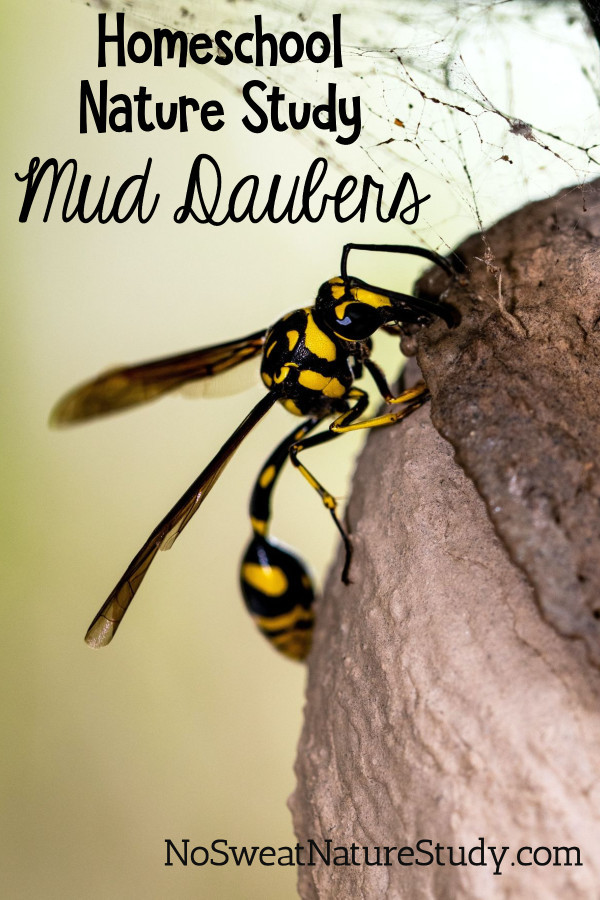
This post contains affiliate links.
Well, thankfully, we can mostly put stings out of our minds for the rest of this nature lesson because we’re talking about a species that doesn’t normally sting humans. It still has venom and the ability to sting, but most of the time, the venom is only used to paralyze and preserve their favorite prey of spiders!
Just in case you don’t already know which wasp species we’re learning about, let me give you a hint. These unique wasps build nests that are made of mud and often look like tubes. You can find the nests built directly on flat walls or ceilings, under eaves, and in nooks and crannies. You typically find the nests outside, but it’s not unusual to find them in garages or attics.
Do you know which wasp species we’re talking about? Mud daubers!
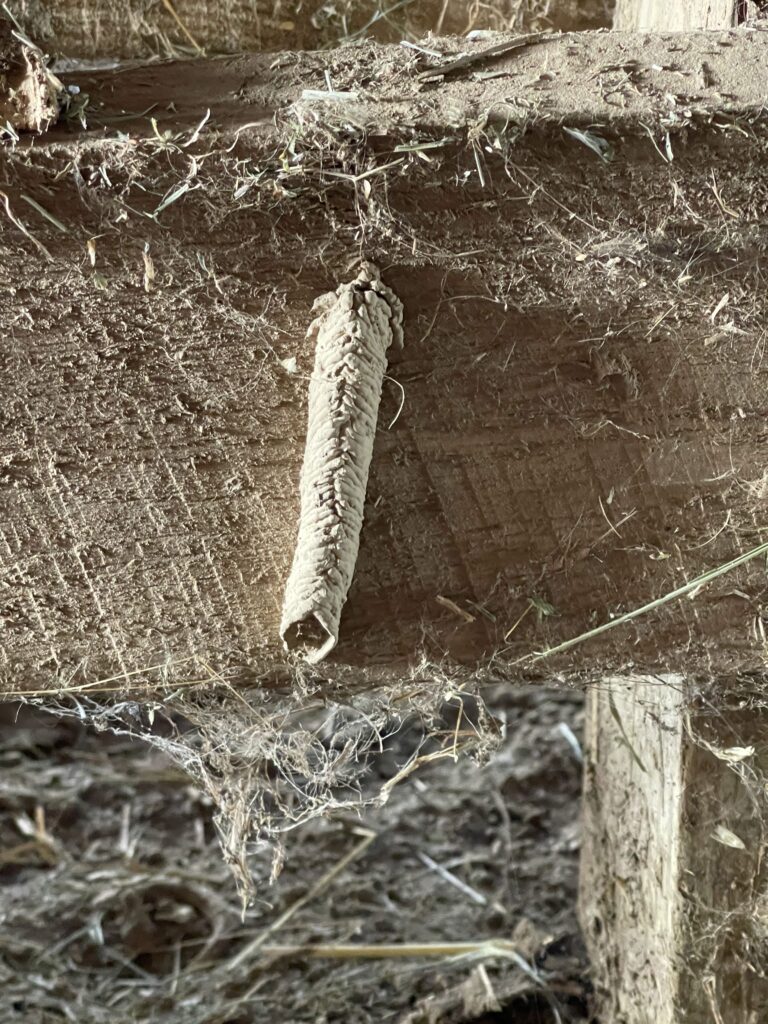
Mud Dauber Nest Building
That’s a really weird name, isn’t it? The “mud” part isn’t all that strange since they make nests from mud, but what does the “dauber” part mean? Well, to daub means to carelessly smear a surface with a thick substance. If you’ve ever painted with oil paints and made thick splotches on your painting, you were a dauber – someone who daubed the paints. A mud dauber is an insect that daubs mud to make a rather simple nest.
If you’ve ever seen a mud dauber hanging around a puddle after the rain, it’s probably collecting mud! Interestingly, the females are the ones who collect mud and make the nests. A female begins building a nest after mating when she needs a place to lay eggs. She looks for a few things before choosing the nest building site. Of course, she needs to have access to mud, but she also looks for a spot that protects the nest from the weather and happens to have plenty of spiders for food.
Once she daubs the mud into several tubes, she does some amazing things. Like, really amazing.
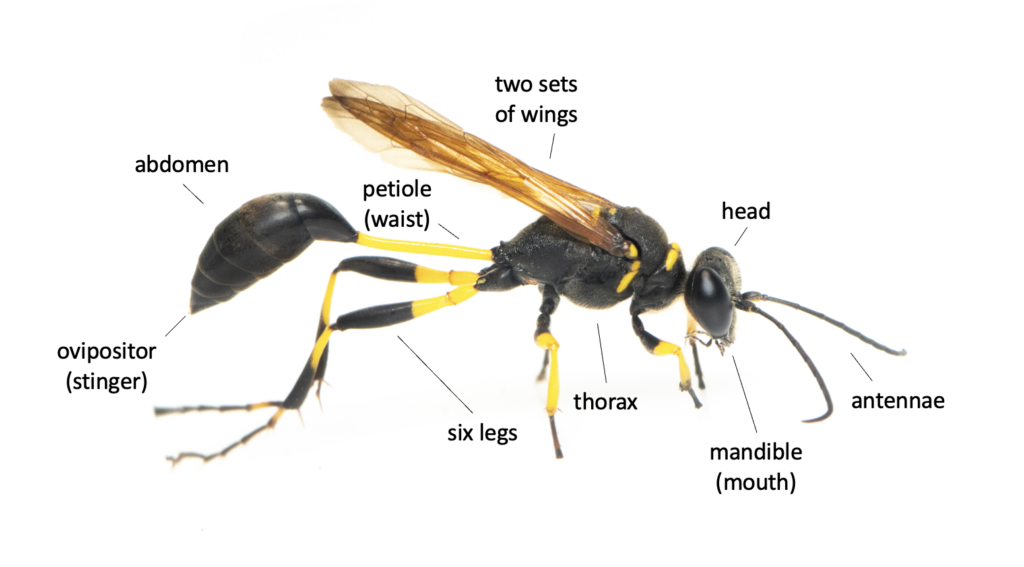
Mud Dauber Life Cycle
First, she uses her stinger to paralyze a spider. The venom also preserves the spider so it doesn’t rot. She places the spider in one of the tubes of the nest. (By the way, sometimes you will hear the tube called a cell.) She pushes the spider to the back of the tube and then lays an egg in the tube. But she’s not finished!
She continues paralyzing spiders and stuffing them into the tube until it’s full. Sometimes, up to 25 spiders can fit into one tube! She then uses mud to close off the tube. Can you figure out what all that spider stuffing is about? Yes, those spiders are there to feed the larva that will hatch from the egg shortly after it’s laid.
Once all the spiders are eaten by a larva, there is plenty of room in the tube for the larva to go into its pupa stage where it builds a cocoon and overwinters there. (That means the mud dauber stays in the cocoon through the cold months and doesn’t emerge as an adult until late spring or early summer.)
You might be surprised to know that adult mud daubers mostly eat nectar from flowers and sap from trees. They save the spiders for their babies!
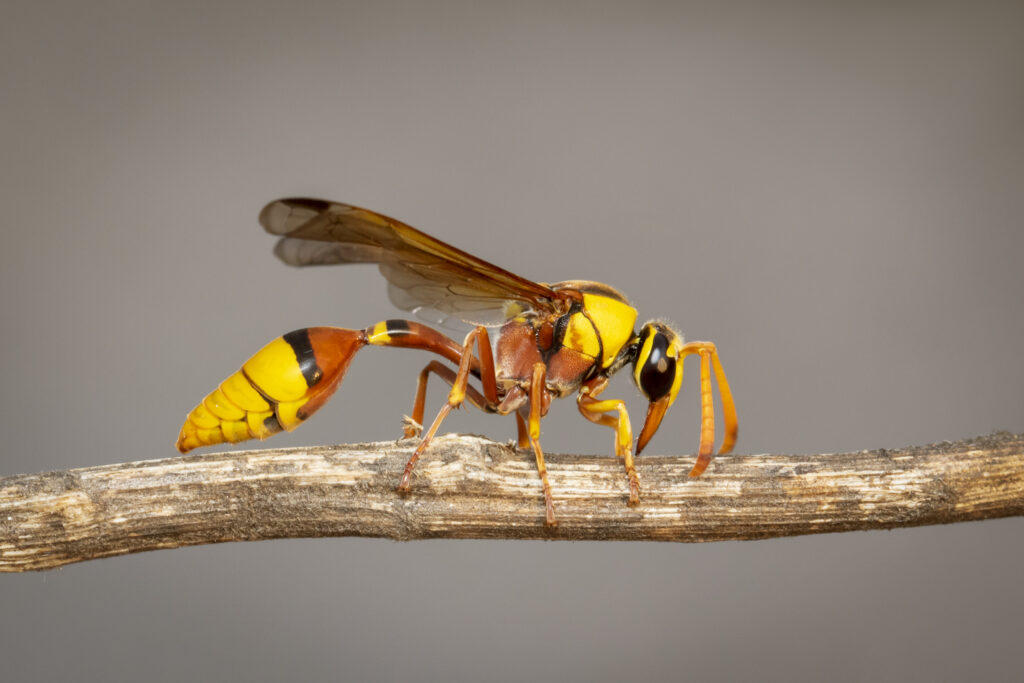
Solitary and Social Wasps
Because one adult female builds a single nest, mud daubers are called solitary insects. That means they tend to live and work alone. Other wasp species, like yellow jackets and hornets, are called social insects because many adults live and work together in various types of nests above and below the ground.
We’re talking a lot about the life cycle of mud daubers today. If you’re interested in learning more about animal life cycles in general, check out the Animal Life Cycle study in the Our Journey Westward shop. This curriculum can be used as a quick science unit study or during your homeschool morning time meeting with the entire family. It uses multi-media resources and meaningful activities to teach about mammals, fish, birds, reptiles, amphibians, and arthropods. It’s a great way to not only teach about life cycles but to help your children learn about major animal groups in general. I think you’ll love it!
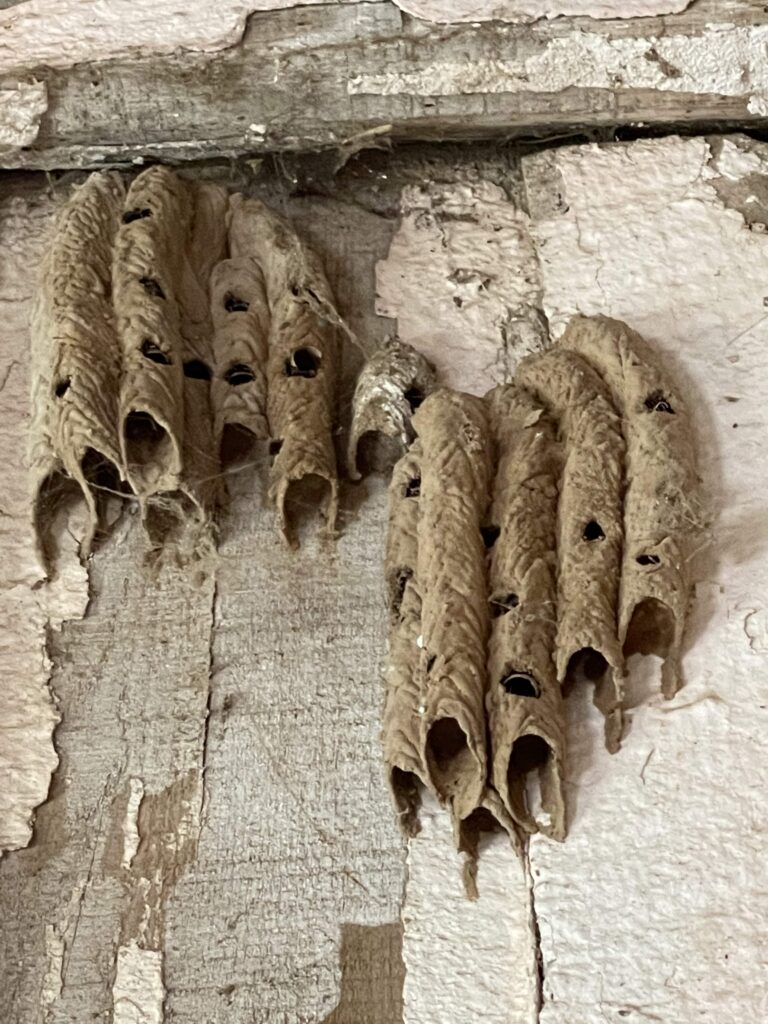
Mud Dauber Nature Walk Challenge
Are you ready for a nature walk challenge or two today?
Mud daubers are common all throughout North America. It’s rather easy to tell them apart from more dangerous wasps because of a very slender, thread-looking part that separates the abdomen from the thorax. However, I don’t really want you getting close to any wasp, even a mud dauber because of the potential danger for a sting.
Additionally, even though we know that a mud dauber’s nest is probably housing non-aggressive mud daubers, that’s not always the case. Sometimes, empty mud nests will be taken over by more aggressive wasps that will happily sting humans. So, I don’t really want you getting close to a mud dauber’s nest either.
What do I want you to do? Well, you have four options
- Take a nature walk to look for mud dauber nests to sketch. If you find one, simply use colored pencils to sketch what you see from a distance.
- Take a nature walk to look for nests of all sorts. Sketch what you find and make comparisons about the materials used to make the nests and their shapes and sizes.
- Use the images of mud daubers and mud dauber nests that I’ve provided here to sketch in your nature journal. Notice that one of those images includes body part names that you can use to label your own mud dauber drawing.
- Use the image of mud dauber nests to construct your own models from play dough or clay.
Wow, you sure have plenty of options! Feel free to choose more than one of them if you want.
I’ll see you next week to learn about some poisonous plants. Until then, happy nature exploring!
Nature Study Curriculum
-
 Animal Life Cycles$20.00
Animal Life Cycles$20.00 -
 No Sweat Nature Study LIVE MembershipFrom: $25.00 / month
No Sweat Nature Study LIVE MembershipFrom: $25.00 / month -
 Animal Signs$28.00
Animal Signs$28.00
Nature Study Challenge Resources
Please leave a rating or a review on your podcast app! It helps the podcast to show up for more people…which means more families can enjoy science through the wonderful lens of nature study! Thank you!
Would you like to record a voicemail to answer this season’s nature study question?
At the end of each No Sweat Nature Study Podcast episode, Mrs. Cindy includes messages from a few of her friends. You have the opportunity to record a message that she might use on an upcoming episode!
All children must have their parents’ permission before leaving a recording. Parents are welcome to record an answer, too!
Each season, there will be a different question to answer. You can see this season’s question below. Think about your answer first and then follow these simple directions:
- Click the button that says “start recording”.
- Tell me your first name. (If you want to tell your age and/or where you live, feel free to do that, too.)
- You will have 60 seconds to answer the question, but try to be concise.
- Push the play button to listen to your recording before sending it to be sure it is recorded properly. If not, simply record it again.











One Comment